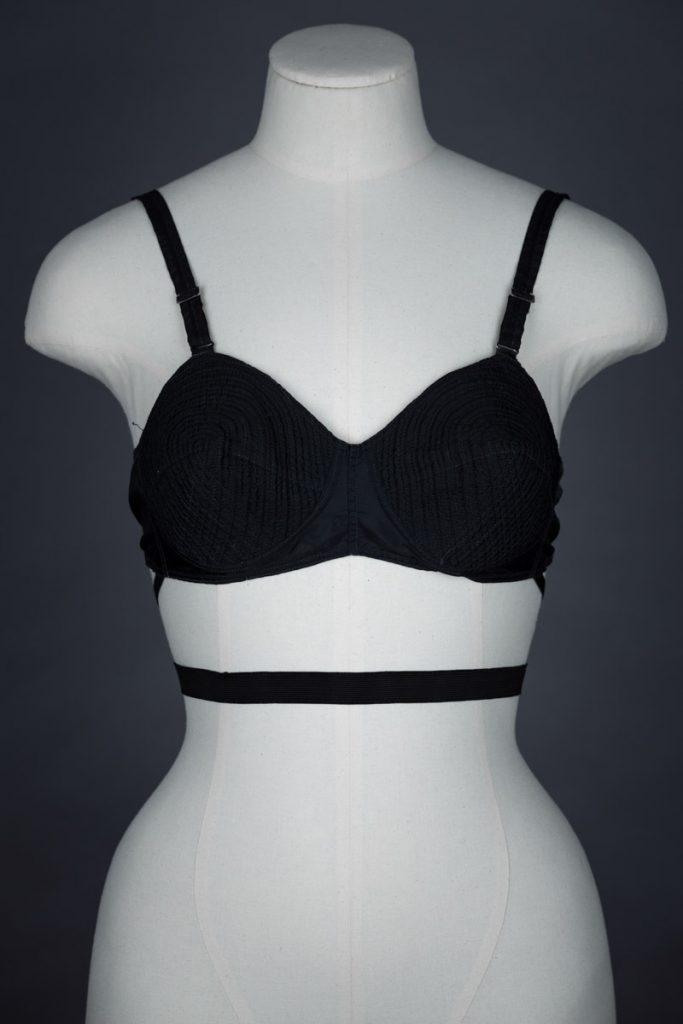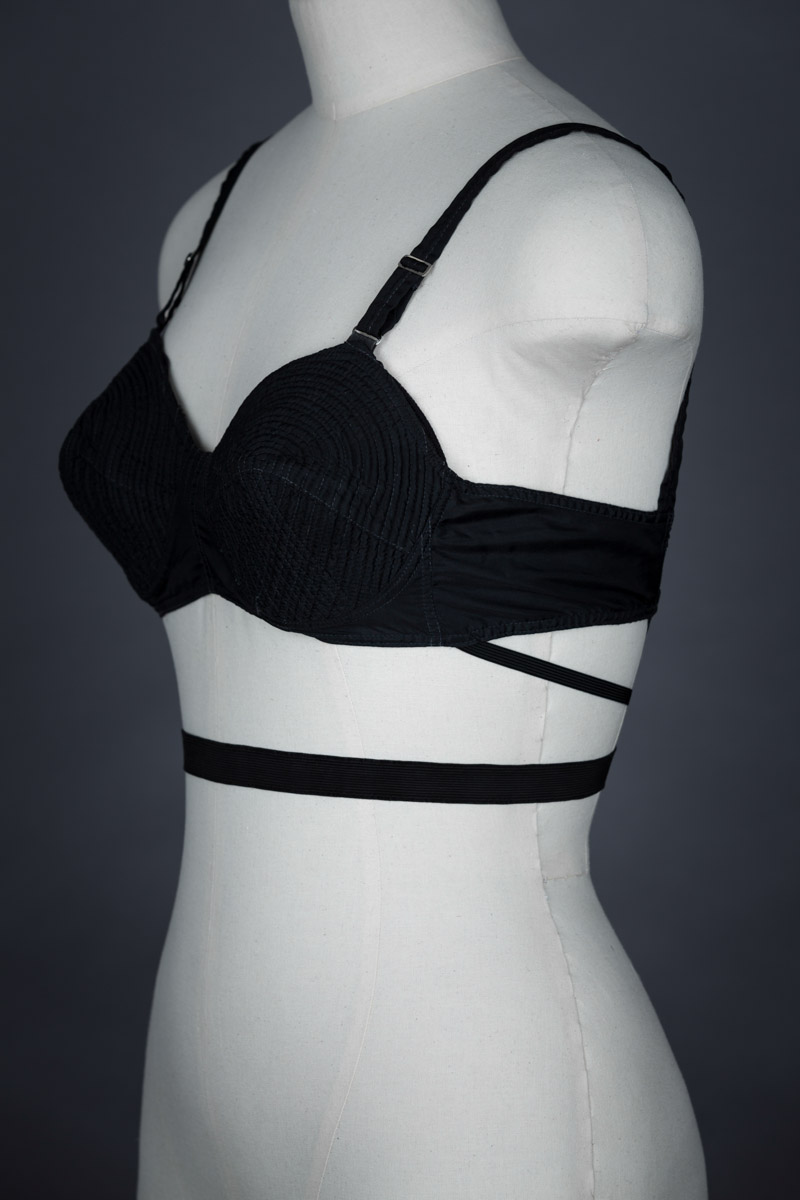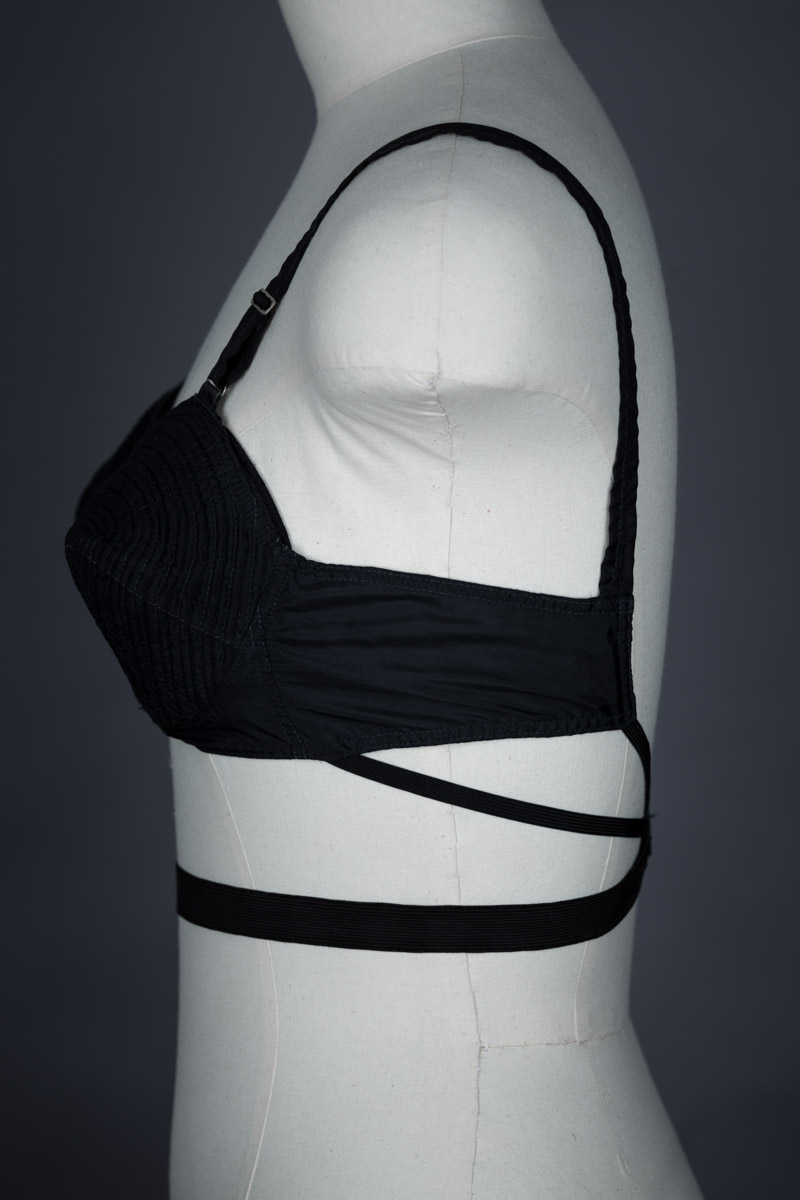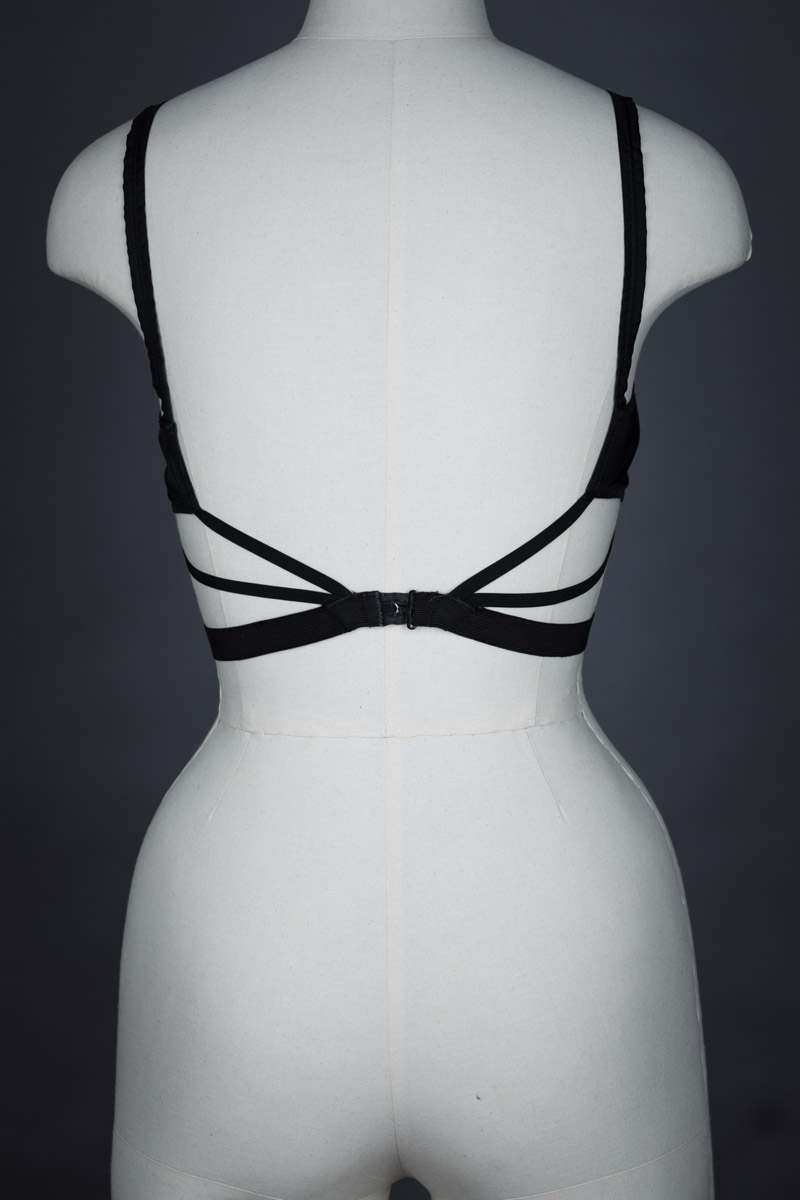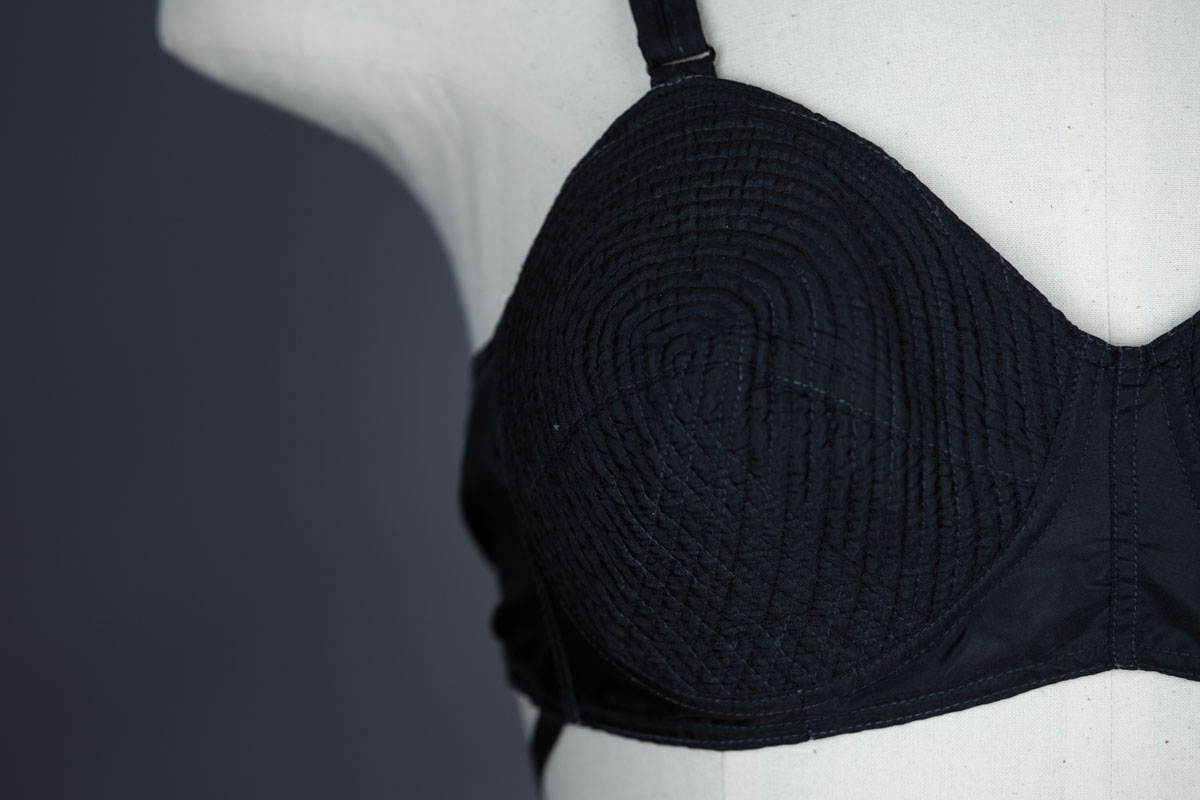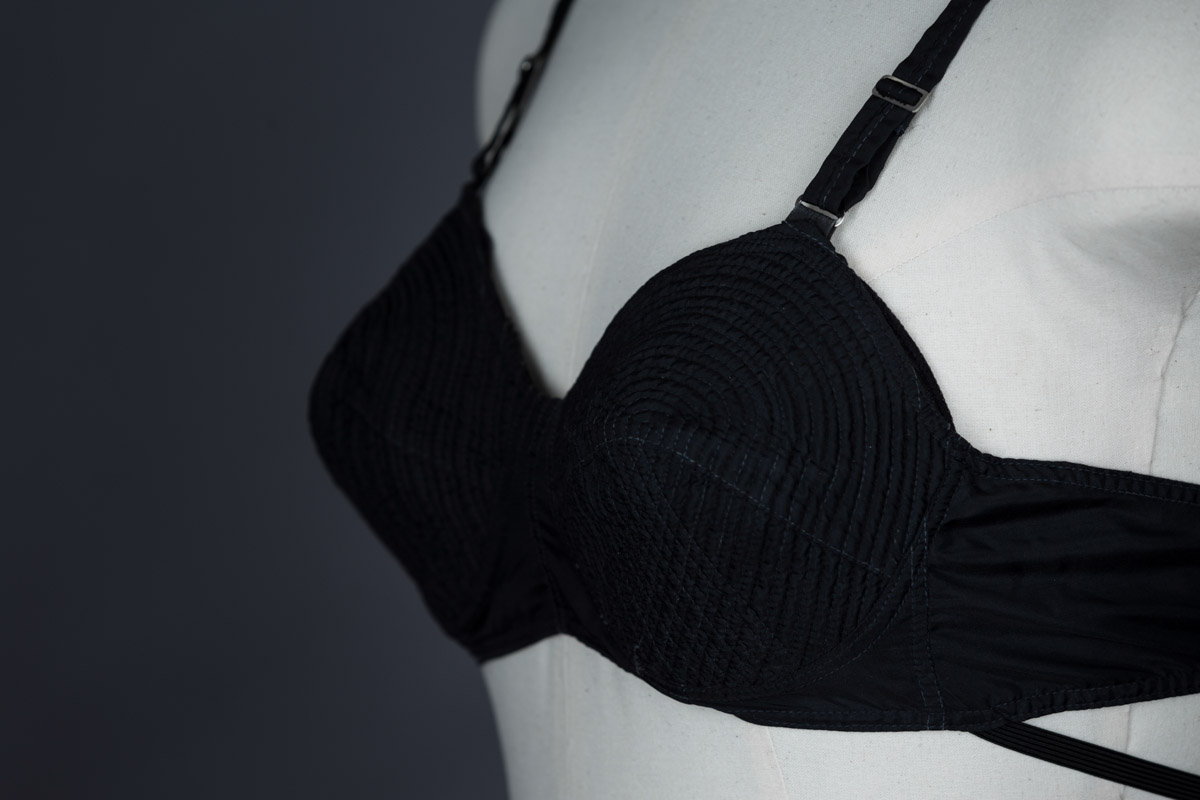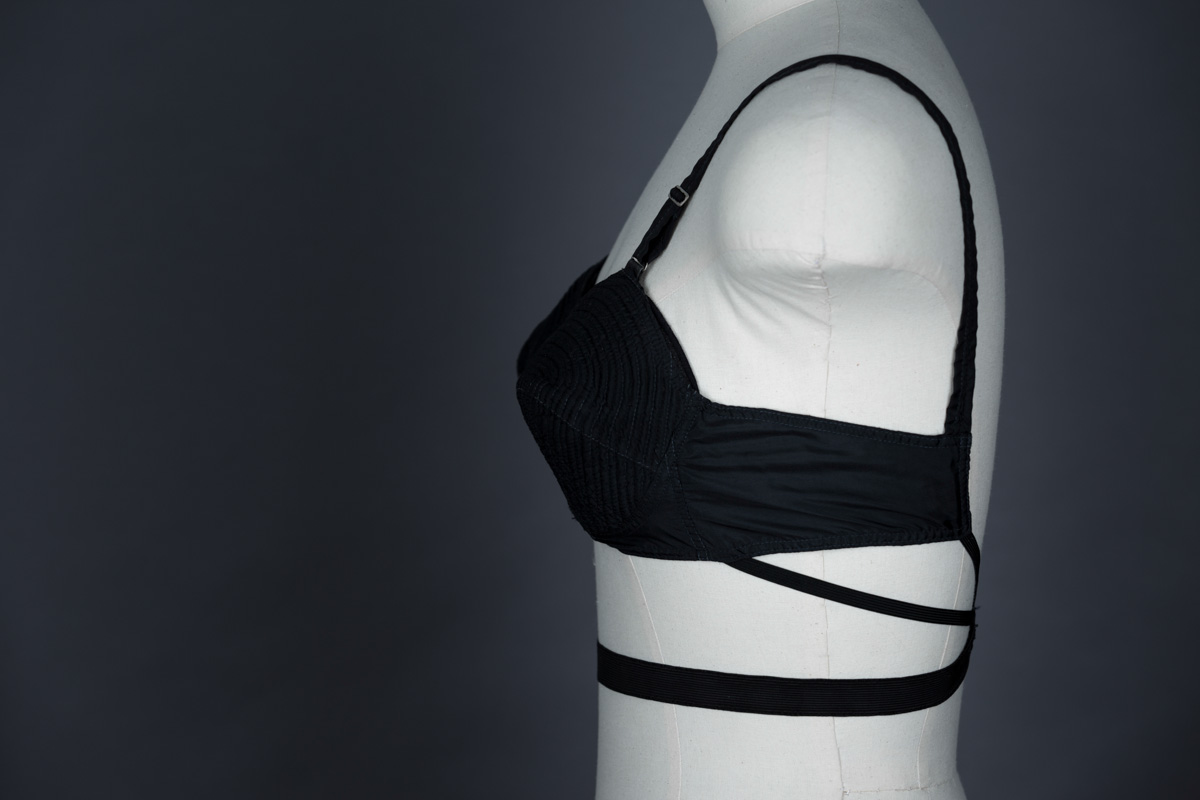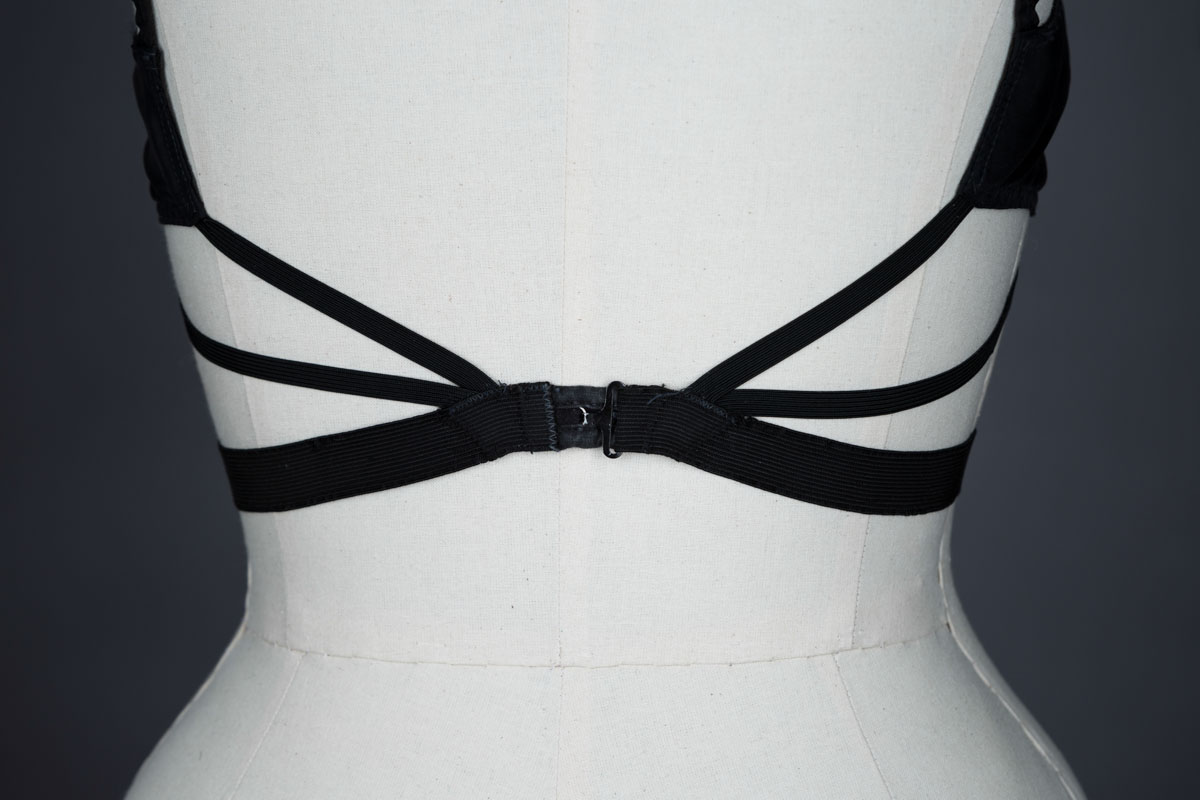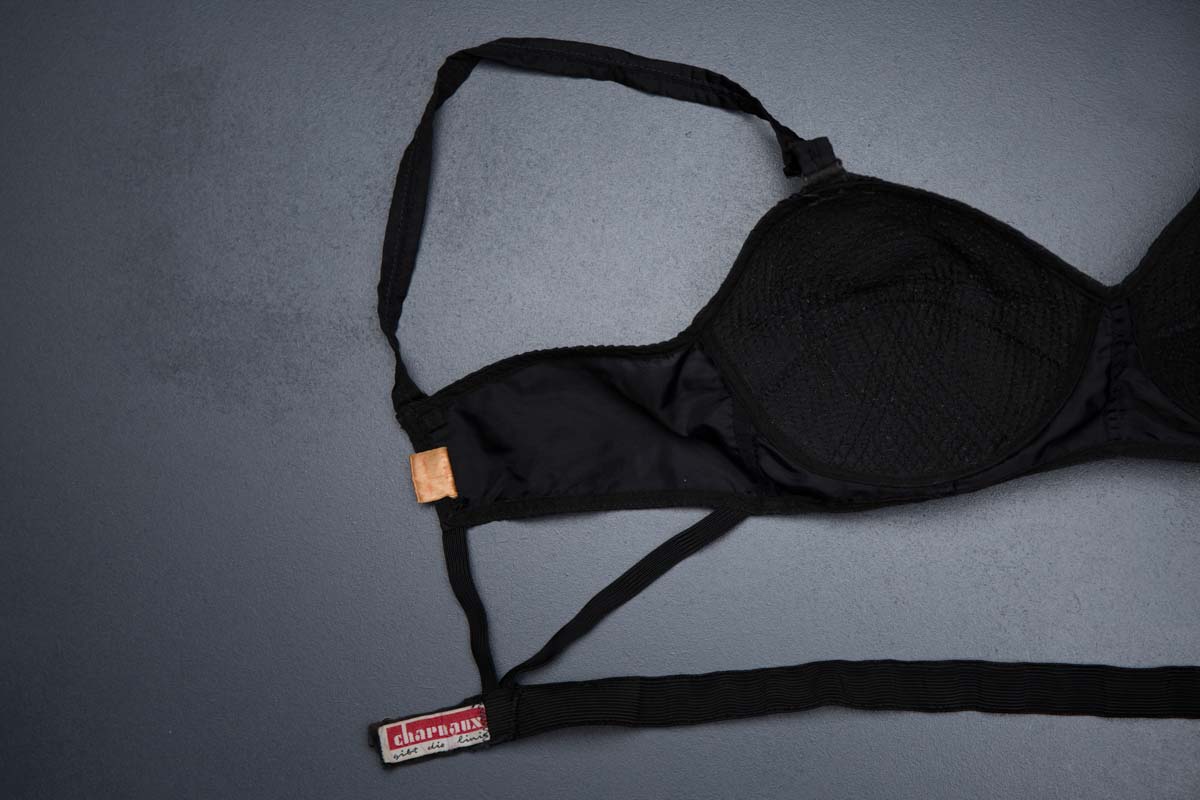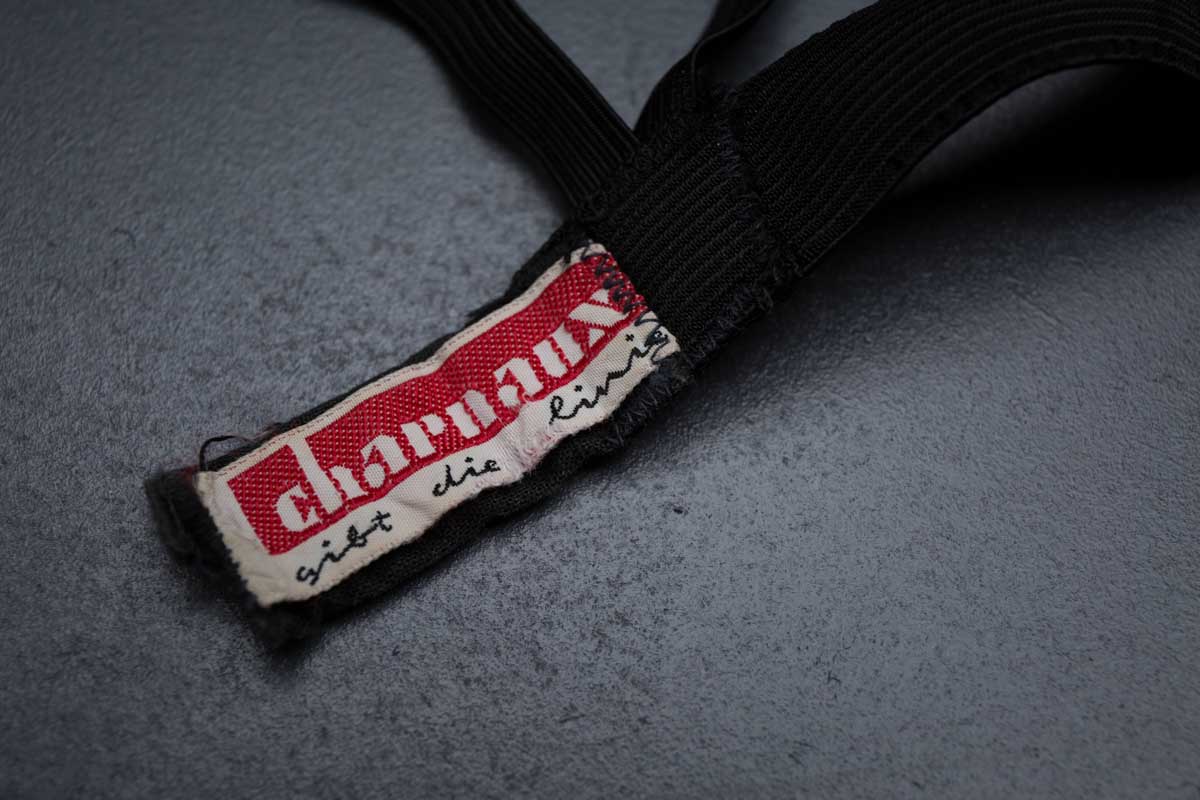Date: 1950s
Origin: Germany
Fabric: Nylon
Brand: Charnaux
Like many bras of the 1950s, this example utilises stitching and padding to provide lift and give the fashionable pointed silhouette. Unusually though, it does not use spiral or circle stitching. Instead the stitching is in a ‘loop’ shape, crossing over under the bust for a double layer of stitching and perhaps providing more effective support than the typical spiral stitch. Whilst spiral stitching usually used a specialist machine, the slight inconsistencies in this bra indicate that it was likely freehand sewn on a twin-needle lockstitch machine.
The cups are constructed with an exterior of nylon and a cotton lining, sandwiching a layer of light padding. The cup pattern only has two pieces that have been zigzag butted together, and relies on the stitching for its support and shape. The bra cradle and wings are made of a single layer of rigid nylon. It is neatly machine stitched with all seams and hems taped over with cotton bias tape.
The bra has been designed for low back garments and uses ribbed elastic strapping as the wing and around the waist for additional support. It fastens at the back with a hook and a pre-made loop tape. The shoulder straps are created with a tube of twin needled nylon. They’re adjustable with enamelled metal sliders from the cup apexes.
The bra has two labels: one brand label, which states the name ‘charnaux’ and slogan ‘gibt die linie’ (translating from German as ‘gives you line’. The other satin label has sadly faded due to wear, so is largely indecipherable.
Manufacturers in the 1930s experimented with different combinations of pattern pieces in order to create supportive bra cups, but soon realised the limitations of the materials they were using. Once the fashionable breast silhouette became more pointed in the 1940s, further innovations in cup construction were needed to achieve this effect. A variety of different stitching techniques to reinforce the cups and provide uplift to the breasts were developed, starting with the spiral stitching of Hollywood Maxwell’s ‘Whirlpool’ brassiere in the US in 1935. Maiden Form introduced their Chansonette in 1938 which historian Jill Fields said (in her book An Intimate Affair: Women, Lingerie and Sexuality) ‘worked on a similar principle but created a circle out of spokelike sections […] Circle-stitched cups ultimately became so popular that special sewing machines with multiple needles were constructed to mass produce them’.
From the collection of The Underpinnings Museum
